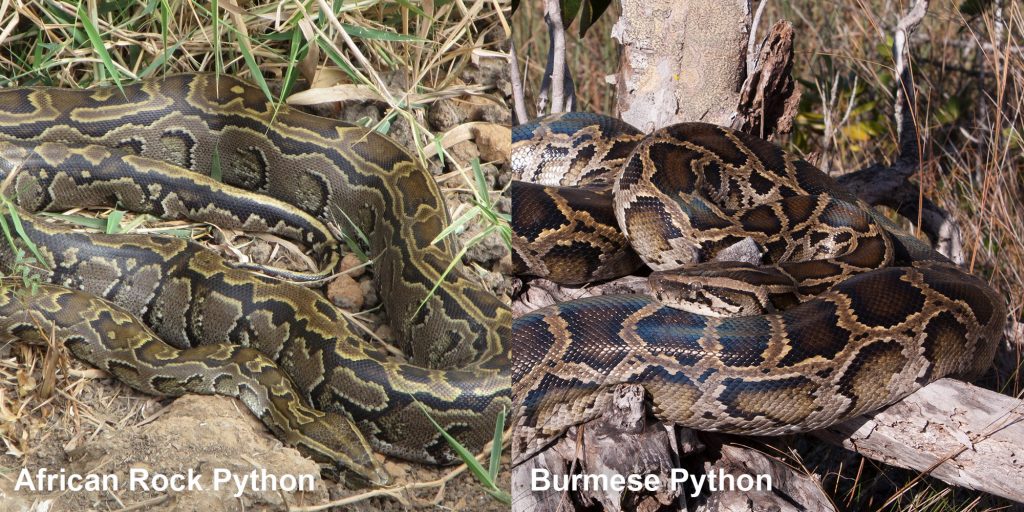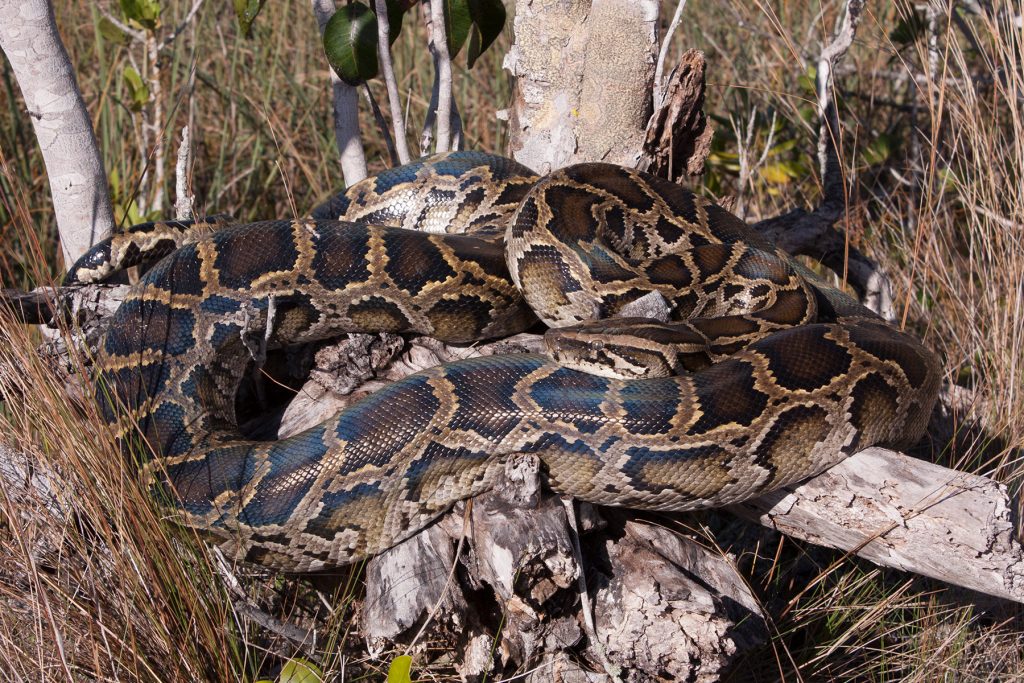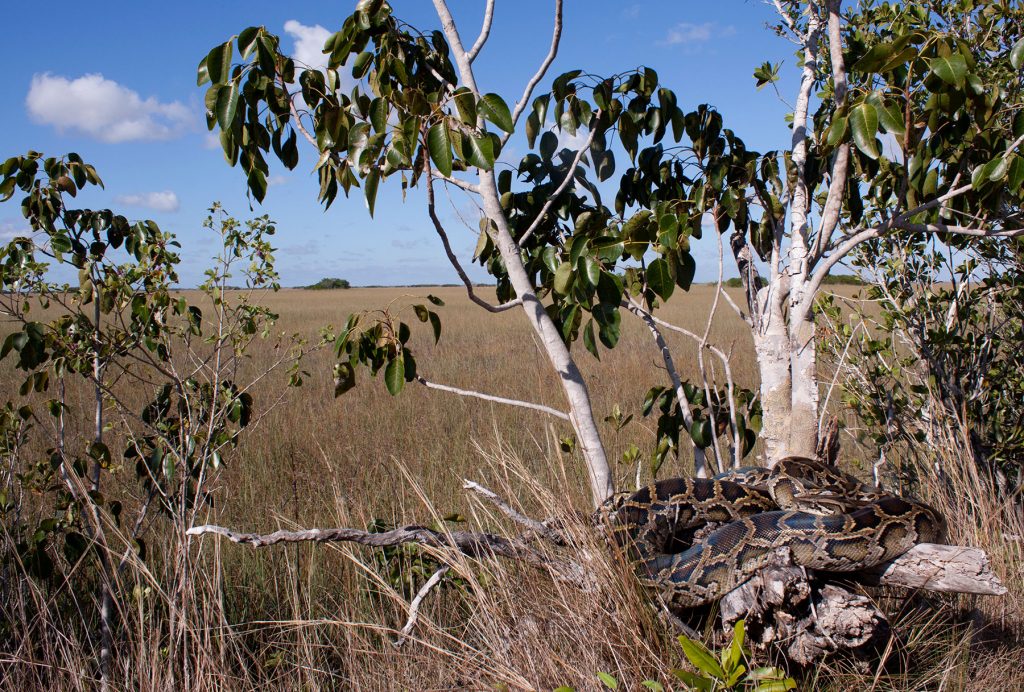NON-VENOMOUS, NON-NATIVE
Other common names
None
Basic description
Most adult Burmese Pythons are about 10-16 feet (3-5 m) in total length. These are very large, stout-bodied snakes with dark brown blotches down the back and sides. The blotches are variable in size and shape, and they are bordered in black. The background coloration between the blotches is usually tan, tannish yellow, or cream colored. The top of the head is dark with a light stripe on both sides of the head that extends through the eye to converge on the nose, forming a dark V-pattern. Juvenile color pattern is similar to that of adults, except the coloration is more vivid.
Range in Florida
Burmese Pythons are a non-native species from southern and southeastern Asia that have been established in Florida since the 1980s. They have been introduced in numerous areas in Florida. However, they are currently known to be established only in the southern Florida peninsula from Lake Okeechobee south to Key Largo and Florida Bay. The Everglades National Park remains a stronghold for this species.
Assessment of risk to people and pets
Non-venomous. Burmese Pythons may bite to defend themselves. Small individuals are not generally dangerous to people or pets. However, larger Burmese Pythons have large, sharp teeth, and their bites can cause severe lacerations. Large animals are also fully capable of eating dogs and cats. Virtually all bites occur when the snakes are intentionally bothered.
Comparison with other species
African Rock Python (Python sebae) Non-venomous Northern African Rock Pythons have two mostly continuous and irregular dark blotches down the back that are bordered by black and white.

Burmese Python. Photo courtesy of Todd Pierson.
Share your observations
You can help scientists better understand the biology and distribution of this species by sharing your observations. Send photos or videos of interesting observations, along with associated information, by emailing the herpetology staff at the Florida Museum for documentation in the Museum’s Herpetology Master Database. You can also post your observations on iNaturalist.
Additional helpful information
Do you have snakes around your house? Learn how to safely co-exist with snakes.
Still have questions about snakes or identifications? Feel free to email the herpetology staff at the Florida Museum with your questions or feedback on this profile.
Banner photo courtesy of Todd Pierson. Please credit any photographers on the page and see our copyright policy.

